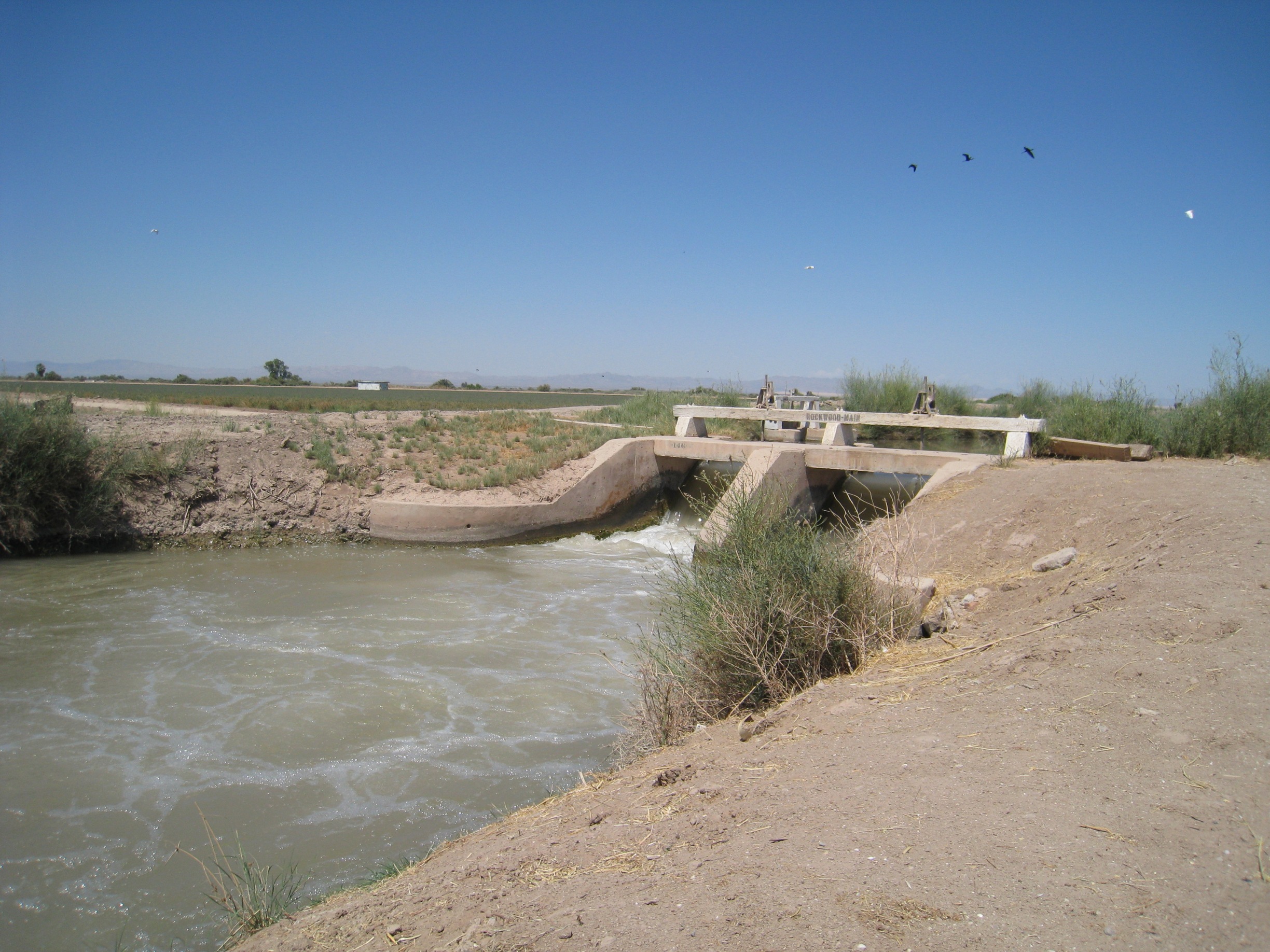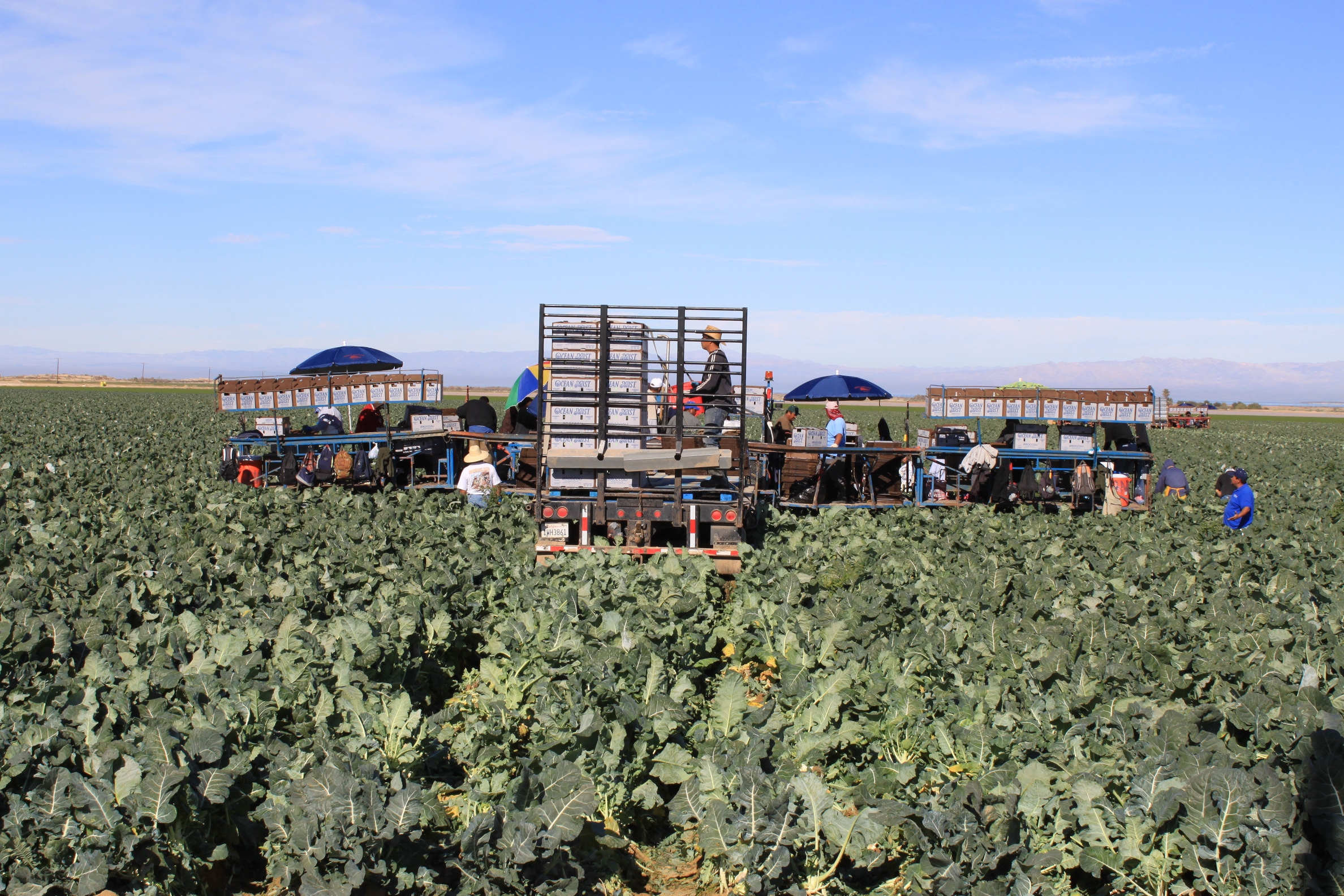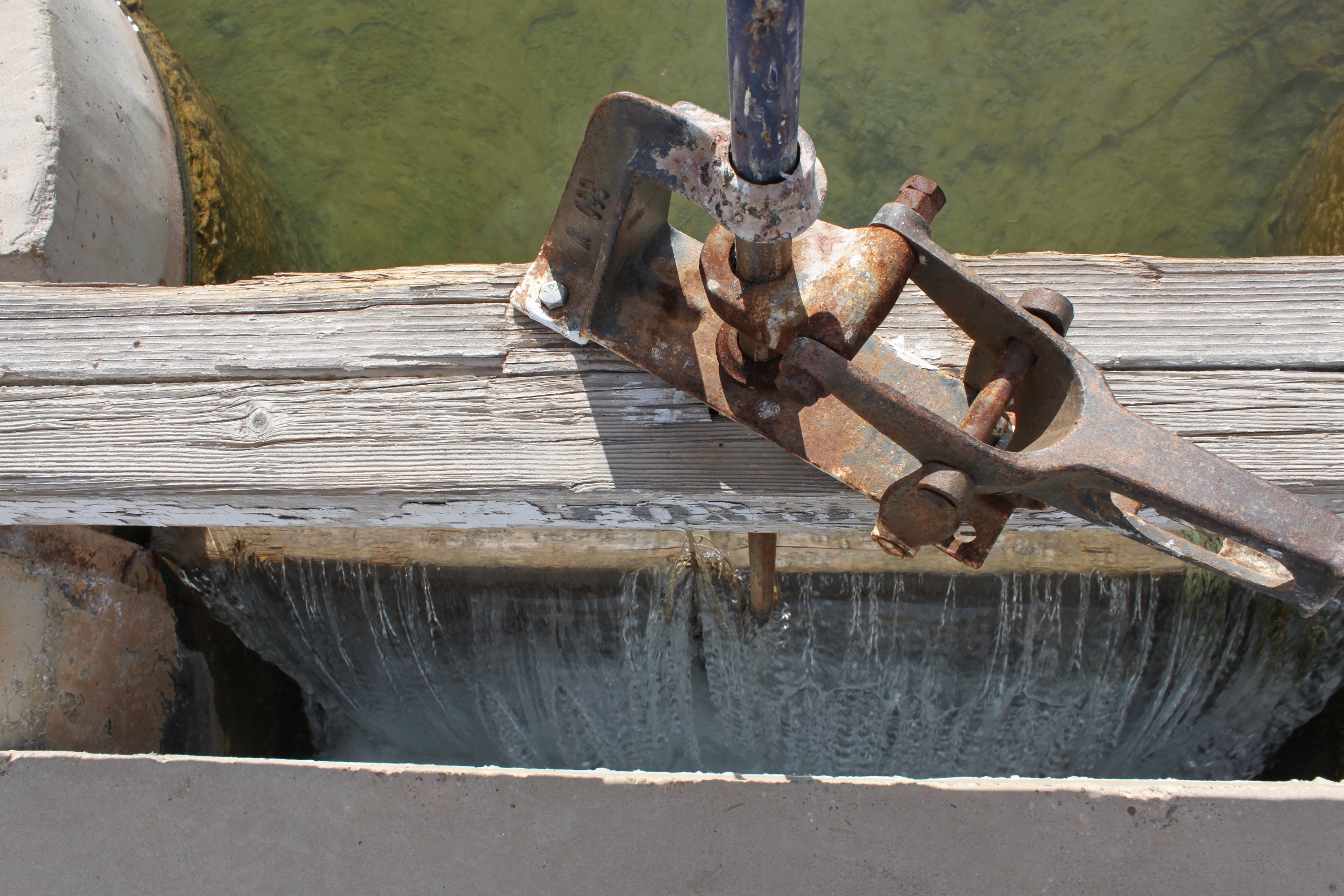One of the most-viewed posts here on the photoblog is on the Imperial Dam and All-American Canal headworks, a post I put together while on a trip gathering photos and information for an upcoming series I have been producing on the Imperial Valley. The project is a self-produced project, one that is set aside when other (paying) projects and situations arise. As I am preparing now to pick up the project again, I have organized and sorted my pictures, and to whet your appetite for the project, as well as get my head back into it, here’s the Imperial Valley in pictures.
Home page readers, please click on the “Read the rest of this page” link below to see the rest of this post.
The Imperial Valley is one the world’s most productive agricultural regions and the nation’s largest year-round irrigated area. Here, the mild winter season and year-round water supply mean the area is always in production, with most fields being double or triple-cropped. During the winter, much of the nation’s lettuce, broccoli, cauliflower and other field crops are produced in the Imperial Valley, earning it the title of America’s winter salad bowl.
In this field, carrots are grown and harvested.


Several large growers, such as Earthbound Farms, own or lease land in the Imperial Valley, allowing them to produce commodities under their labels year-round. This newly planted field of salad greens …

One of the first major crops to come out of the Imperial Valley was cantaloupe; a deal between Southern Pacific Railroad and Imperial Valley growers in the early 1900s had cantaloupe trains delivering the tasty melons to the eastern markets long before their local growers were producing; the cantaloupe trains launched the Pacific Fruit Express, setting the standard for delivering fresh produce to different areas of the country. Cantaloupe still remains a big crop for the Imperial Valley. This photo sequence shows the planting of cantaloupe in January for harvesting in the spring. First the seeds are planted …
Plastic is laid over the top …

… and the rows are straightened.

The hotter summer months are unsuitable for growing vegetable crops, so mostly field crops such as alfalfa and hay are grown.

They grow a lot of hay and feed crops for animals here. Much of it is for export,
But plenty of it will go to California dairies and to feed the 300,000 or so cattle at Imperial Valley feed lots, too.
The lifeline of the Imperial Valley is the All-American Canal, which delivers water entirely by gravity from Imperial Dam (located about 20 miles north of Yuma, Arizona) …

… across the Algodones Dunes ….

… and into the Imperial Valley.

Hydroelectric plants are located all along the route to take advantage of any elevation drops for electrical power production.
Three main canals deliver the water north to distribute through the valley: the East Highline Canal (the largest of the three):

From here, water is tapped into smaller canals and laterals which deliver the water to the fields.

The Imperial Irrigation District manages over 1500 miles of canals and laterals which deliver water to approximately 5600 gates serving the 479,000 acres of farmland within the Imperial Valley. The entire system is above ground and much of it is still operated manually.

It is doubtful that the system here will ever be put underground, as the cost would run into the billions.

So to increase the efficiency of the system, the Imperial Irrigation District is working with automated irrigation gates …

and regulating reservoirs, among other things.

The recently completed Drop 2 Reservoir (renamed the Warren Brock reservoir) is an 8,000 square-foot reservoir built to capture water that would otherwise flow on to Mexico, and conserve it for use within the Imperial Valley. Here, at a spot called “Drop 1” along the All-American Canal, water destined for the Coachella Valley departs on the right, while water headed towards the Drop 2 Reservoir would flow through the canal to the left.
The water enters through this inlet structure…

and is stored here in this empty reservoir. The intention is for this reservoir to remain mostly empty and therefore available to store the excess water when it becomes available.

Agriculture runs 24 hours a day, 7 days a week in the Imperial Valley. Irrigators can typically work 20 hour shifts delivering water to the fields.

Much of the work is still done by hand.

Due to the high salt content of the soil, coupled with the high salt content of the Colorado River’s water, the fields must be periodically leached to keep accumulated salts below the root zone. A system of tile drains underneath the fields pulls the drainage water from beneath the field.

The drainage water is collected in a system of drains …

and carried away, where it will ultimately end up in the Salton Sea.

Most drainage water is collected and delivered to the Salton Sea through the Alamo River …

… and the New River. (This is the New River, closer to the Salton Sea. By now it has traveled some 200 miles since crossing the border, and the water has been cleaned up considerably. This is the New River as it crosses the border at Calexico.)
The flow of New and Alamo Rivers which feed the Salton Sea is largely comprised of agricultural drainage water and is the main source of inflow for the Salton Sea. Here, the New River meets the Salton Sea.
And here’s an aerial shot of New River feeding into the Salton Sea by Bureau of Reclamation.

The Salton Sea was designated as a sump for agricultural drainage in the 1920s by presidential executive order. (Photo by the Bureau of Reclamation.)

And so here is where our water story ends, at least for now, here at the Salton Sea. The water has traveled from Imperial Dam, through the rich fields of the Imperial Valley, and this is what is left over. If you consider that the waters of the Colorado River are used and resued as the farms and cities along the river’s route draw their water and return their drainage water and treated wastewater to the river, then really the Salton Sea represents the left-overs and discards of the entire civilization that exists along the Colorado River’s route. And since the Colorado River rarely reaches the sea anymore, it is the real end of the line.
The Salton Sea has its own story to tell, one of boom, bust, and dead fish.
One of the last bits of remaining habitat for birds and migrating waterfowl in the lower Colorado River area, it nonetheless faces an uncertain future. It’s a story I plan to tell you as I work on my Imperial Valley project.

 And so, for now, so long from the Imperial Valley and the Salton Sea! Much more to come …
And so, for now, so long from the Imperial Valley and the Salton Sea! Much more to come …





























As I call Brawley, California my home town, I really enjoyed your photoblog on the Imperial Valley. I now live in Canada but the beauty that is the Imperial Valley is truly unique. Would you mind if I shared your blog on my Pinterest board? Thanks
Thank you for your complement! Of course you may share my website – I’d really appreciate that!
Thank you for your complement! Of course you may share my website – I’d really appreciate that!
Regards,
Maven
Consider my appetite whetted. Hungry to see the rest. Great work!
I grew-up in the IV from 1950-1966. Dad owned a crop dusting business and I spent every summer flagging fields. I was around, and sometimes in, these canals all the time. They were full of fish, turtles, and muskrats; my enthusiasm for swimming in them was dampened somewhat when rumors of alligators in them began to circulate. Your fine pics bring back many memories, sounds, smells, and all that.
You may want to edit the text “The recently completed Drop 2 Reservoir (renamed the Warren Brock reservoir) is an 8,000 square-foot reservoir”. That’s about the size of a small residential lot in El Centro.
Thanks again.
Hi Larry,
Whenever I have traveled through the Imperial Valley, it always feels like I am looking at history almost as I look down these dirt roads and at this irrigation structure that hasn’t changed much, so I imagine it must look much as it did those many years ago, except perhaps for the geothermal plants.
Thanks for the note on the reservoir. I guess square-feet would be a little small!
By the way, there’s a lot more on the Imperial Valley on the photoblog here: https://mavensphotoblog.com/?s=%22Imperial+Valley%22
Thank you for your comment!
this page has been a great help for my son in a school assignment thank you for all the work put into it.